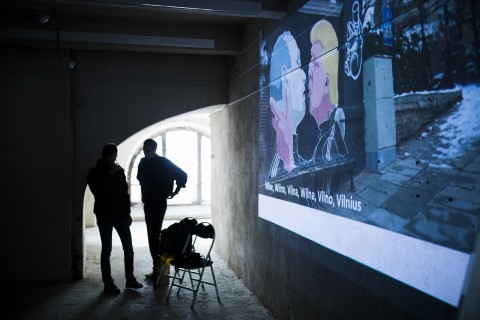Urban change via abandoned landmarks
| Numbers | |
| 1 | landmark with its acknowledged national importance |
| 1000 | visitors per day |
| 12 | stakeholders involved |
Cities often have abandoned unused, underused or misused places. Vilnius St. Virgin Maria's Church is one of a very fine example how it is difficult to rethink existing structures. During Soviet times it was converted to a warehouse, installing two additional floors and breaking up the whole church structure. After the regaining independence, the church belonged to the Ministry of Education and Science and it stayed untouched for 25 years. Paradoxically, the church is based in a very visible location – in the very heart of the old town on a busy street. There were a few initiatives to occupy the building for cultural events, but it did not become sustainable and continuous, because there was a lack of dialogue amongst different stakeholders.
Our approach was to involve all key stakeholders from the very beginning.

Moreover, we did it intersectorally, inviting public, NGO and business sectors. Through the activities, all these different sectors not even realised their roles but also understood their commitments. Later on, we expanded the stakeholders’ circle via community building and public participation events. This helped us to co-create the sustainable strategy of the place.
Currently, the space is actively used by various stakeholders and is open to different stakeholders and sectors. The vision has expanded to the outside of the building and now the strategy of revitalisation is being created for the whole area embracing different stakeholders and their properties (schools, university, private apartments, nationally owned objects).
Photo credits: Panos Georgiou